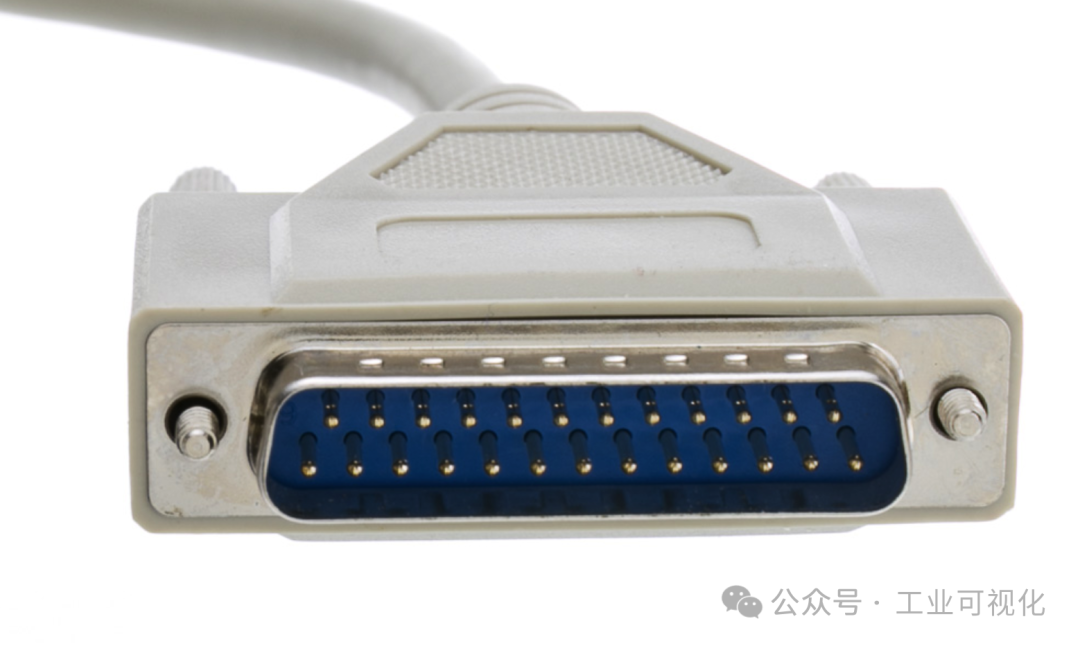Free for Commercial Use! A Low-Code Visual Development Platform for Industrial Web with 1500+ Components
Incredible Slimming!!! RS-232 from DB25 to DB9
Industrial Control for 5 Years!!! Only Connecting Three Wires to RS-232???
Importance of RS-232
RS-232 is a classic serial communication interface standard that has been widely used in computers, industrial equipment, embedded systems, and more since its introduction in 1969. Although technologies like USB have become mainstream today, RS-232 still holds an irreplaceable position in certain scenarios due to its simplicity, ease of use, and reliability. This article will analyze the core electrical characteristics and physical structure of the RS-232 interface in detail, aiming to help technology enthusiasts gain a deeper understanding of this ancient yet practical standard.

Electrical Characteristics: Voltage Determines Transmission Logic
The electrical characteristics of RS-232 are fundamental and key to understanding its design. RS-232 was established by the Electronic Industries Association (EIA), which detailed the operating voltage, signal logic, cable load, and more.
-
Signal Logic and Voltage Range In RS-232, data is transmitted through voltage signals, with logical states divided into “1” and “0”:
- Logic “1” (MARK): Voltage range from -3V to -15V;
- Logic “0” (SPACE): Voltage range from +3V to +15V;
- Voltages between -3V and +3V are considered “invalid range” and are not recognized as logical signals. This method of representing logic with positive and negative voltages differs from modern TTL (0V and +5V), designed to reduce electrical noise interference and improve data transmission stability.
-
Disadvantages of Single-Ended Signal Transmission RS-232 uses a single-ended signal design, meaning each signal line’s reference point is a common ground (SG). While this design is simple, it also results in weaker anti-interference capabilities, making it susceptible to external common-mode noise. Therefore, the effective communication distance of RS-232 is relatively short, typically limited to within 15 meters under normal conditions.
-
Load Impact on Communication Distance The allowable load capacitance for RS-232 drivers is 2500pF. Generally, the communication distance depends on the type of cable used and its length. For example, standard communication cables have a capacitance of 150pF/m, so the communication distance is around 15 meters; if low-capacitance shielded twisted pairs are used, the distance can be further increased.
Physical Structure: From Connectors to Pin Definitions

The physical structure of RS-232 is also crucial, designed to balance the hardware manufacturing processes and practical needs of the time.
-
Standard Connectors and Pin Definitions The two most common connectors in RS-232 are: DB-25 and DB-9.
- DB-25 (25-pin connector): The original standard supports 25 signal lines, including 9 common signal lines and several spare signal lines. Although this connector is comprehensive in functionality, it is relatively large.
- DB-9 (9-pin connector): In modern applications, DB-9 has gradually replaced DB-25, becoming the mainstream interface type. It streamlines the number of signal lines, retaining only 9 key signals, commonly found in computer COM ports.
-
Signal Line Function Analysis Whether DB-25 or DB-9, the core signal line functions remain consistent, including:
In some lightweight applications, basic communication can be achieved using only TxD, RxD, and SG, known as the “3-wire RS-232”.
- TxD (Pin 2 or 3): Transmit data channel;
- RxD (Pin 3 or 2): Receive data channel;
- SG (Pin 7): Signal ground for potential reference;
- RTS/CTS: For hardware flow control, one is a request to send signal, and the other indicates permission to send;
- DTR/DSR: Indicates whether the device is ready.
-
Mechanical Design The connectors and interfaces of RS-232 are also relatively simple and reliable. The connectors are equipped with a screw-locking mechanism to ensure stability and continuous connection in industrial environments. Although this feature is less common in modern interfaces, it allows for better performance under harsh conditions.
Classic Application Cases and Technical Reviews

In the past, RS-232 interfaces were widely used for communication between computers and printers, modems, and industrial equipment. For example, early IBM PCs controlled peripherals via RS-232, which was also a core communication method for some retail POS systems and terminal devices.
Even today, RS-232 is still in use. For example:
- In industrial automation, it is used to connect PLCs to industrial control panels;
- In embedded development, it is used to trace code through its debugging signals;
- Older medical devices also rely on this interface for data collection.
However, the communication speed of RS-232 is limited to 20 kbps, which seems slow compared to modern high-speed serial buses (like USB). Moreover, its point-to-point transmission mode limits data exchange between multiple devices. Therefore, today RS-232 is more often regarded as a “legacy interface,” existing in scenarios where stability is highly required or upgrades are difficult.
With its simple design and stable performance, the RS-232 interface once became the king of serial communication. Although its electrical characteristics limit communication speed and distance, they also provide sufficient anti-interference performance, making it still relevant in short-distance high-speed communication scenarios. Despite modern technologies gradually replacing RS-232, it still holds significant value in industrial equipment, embedded systems, and compatibility with older devices.
Recent Hot Articles:
| What Layer Does Modbus Operate On???Don’t Understand PLC Hardware Configuration! Don’t Get into AutomationDomestic Open Source Configuration Tool! AmazingWhy is the RTU Frame Length Strictly Limited to 256?Essentials! Modbus ASCII Explained in One GoData Visualization is Amazing! Open Source Takes You to New HeightsWhy Can’t Industrial Control People Live Without Serial Servers?Start Efficient Modbus and MQTT Debugging, Incredible |